The Magnificent Seven: Imaging Resource’s Camera of the Year Awards
posted Monday, February 25, 2013 at 1:00 PM EDT
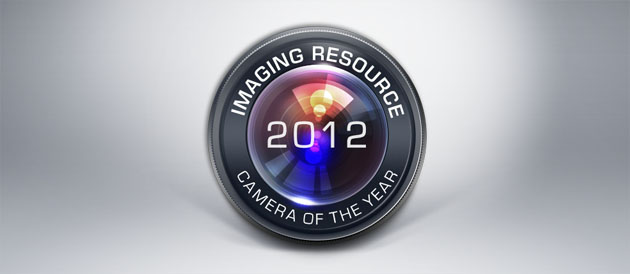
Every year, the Imaging Resource staff has a lively debate about our favorite digital cameras of the year, and we've sometimes even shared our thoughts on the matter with readers. But we've never handed out formal awards to our top picks. That is, until now.
For our inaugural Camera of the Year Awards, we came up with seven categories we felt spanned most of the great cameras we were privileged to test and review in 2012. We couldn't bring ourselves to lump all the cameras together and single out just one for superlatives. Some might say that we just couldn't make up our minds, but cameras ranging from the pocket-sized wonder Sony RX100 to the action-shooting pro phenom Canon 1D X all deserve recognition, and it's not exactly fair to compare them head-to-head without some context.
To be eligible for our Camera of the Year Awards, a digital camera had to be introduced in the U.S. in the calendar year of 2012, which means some models announced at year-end but not available until this year could not be considered. In addition to specific camera models, we also considered the technologies that were introduced last year, and ultimately chose to honor one as the Technology of the Year.
So, without further ado, here are our Magnificent Seven -- Imaging Resource's Camera of the Year award-winners, plus Cameras of Distinction honorees in most categories, for 2012:
Overall Camera of the Year: Sony RX1
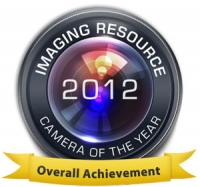
Introduced last September at Photokina 2012, the Sony Cyber-shot DSC-RX1 was literally a game-changer for the industry, completely resetting expectations for what could be accomplished in a compact camera. With a full-frame 35mm sensor, a super-sharp, fast-focusing Carl Zeiss 35mm f/2 lens, all packed into a body smaller than some high-end digicams, the RX1's specs alone would merit attention. When combined with its superb image quality and uniquely flexible user interface, the Sony RX1 was a natural choice as Imaging Resource's Camera of the Year for 2012. Stunning was the word that came to mind when we first saw it and the image quality it delivered -- a feeling that only grew as we spent more time with it.
The image quality of the Sony RX1 isn't merely great, it's exceptional. And then there's the lens. Put simply, the Sony RX1's lens is the sharpest, most uniform full-frame 35mm optic we've ever tested. Having a sensor derived from that in the Sony A99, this comes as no surprise: That camera takes great photos as well, but the RX1 more than matches it. And it stacks up against the best the full-frame field has to offer, without limitation. It amazed us that we could shoot wide open at f/2 and not have to worry that the large aperture would compromise the quality of our images; our shots were sharp from corner to corner, even wide open. Overall, it's hard to overstate just how impressed we were with the RX1's lens, and that it handily beat the A99 for sharpness, even with the best lens we could put on it.
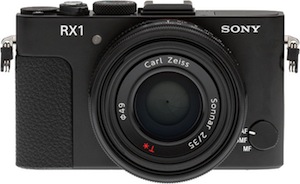
Of course, no camera is perfect, and the RX1 has issues that gave us some pause in our final judging. While the lens truly is remarkable, it is a fixed 35mm prime, so there's not a lot in the way of focal length flexibility. In addition, we found a subtle magenta/cyan cast across the frame when shading correction is enabled, ineffective AF during movie recording, and significant moiré issues in both still and video capture. After a good bit of internal discussion, though, we concluded that the RX1's remarkable strengths and ground-breaking nature far outweighed its limitations, making it a natural choice for IR's first Camera of the Year.
Bottom line, the Sony RX1 is an amazing accomplishment in an amazing year for cameras. As we said in our review, our time with the RX1 was a joyous experience, taking us away from the cold details of critiquing camera technology and analyzing specs to simply enjoy the pleasures of taking great photographs. The camera so expands the bounds of what's possible with a compact camera that it amounts to an entirely new and completely liberating experience. A joy to use and phenomenal image quality to boot; what could better define a Camera of the Year than that?
Cameras of Distinction:
Olympus OM-D E-M5: Winner of the IR Compact System Camera of the Year, see below.
Canon EOS 1D X: Winner of the IR Pro Camera of the Year, see below.
Compact System Camera of the Year: Olympus OM-D E-M5
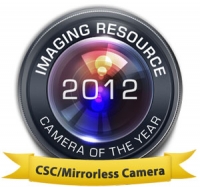
Some cameras make an immediate impression on you, and the Olympus OM-D E-M5 had us hooked from the start. Its solid, weather-sealed build and rugged, retro good looks led to a serious crush on the camera, then the stunning photos it produced turned into an outright infatuation. Indeed, the OM-D E-M5 put Micro Four Thirds cameras on the map with serious camera enthusiasts and professionals alike by resurrecting a popular body design from the company's past and equipping it with blazing autofocus and an excellent 16-megapixel MFT sensor. When we paired the OM-D E-M5 with several excellent Olympus lenses, the camera produced sharp, rich photos that rivaled those from its portly APS-C DSLR cousins -- even at high ISOs -- not to mention outpaced photos from most other CSCs we'd seen to that point. While the camera lacked an optical viewfinder -- a feature that's becoming less and less important these days -- it did include an excellent EVF and a bright, tilting OLED monitor that made shooting a breeze.
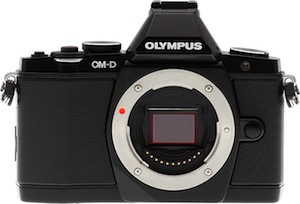
There were a lot of great CSCs launched in 2012, but we kept coming back to the Olympus OM-D E-M5 as our gold standard for what a small interchangeable-lens camera can be. Maybe it's because it just felt like a serious camera, designed specifically for serious photography. (Although its small size and versatility make it perfectly capable for casual, on-the-move shooting, too.) We found the user interface to be excellent and deep, with tons of automatic and custom modes to make shooting simple and enjoyable. Two control dials on top of the body make Manual exposure adjustment a snap, and we found the rest of the OM-D E-M5's controls smartly placed and intuitive to use. Again, the end results are what most photographers ultimately care about, and the camera commanded our full attention with its low-light capabilities (due in part to the OM-D E-M5's excellent, built-in image stabilization) and crisp, high-resolution images that dripped with detail and accurate, eye-catching colors.
For all these reasons and more, the Olympus OM-D E-M5 not only was a no-brainer for IR's CSC of the year, but it also ranks as one of our favorite digital cameras of all time.
Compact System Cameras of Distinction:
Fujifilm X-Pro1: Quality prime lenses and a tack-sharp sensor come together with a unique hybrid optical viewfinder to form the Fujfilm X-Pro1, a digital camera built exclusively for enthusiast photographers. The X-Pro1 really hits the nail on the head, driving deep into high-ISO territory with tack-sharp images. Its controls and feature set are also ideal for the target market, and its available lenses are reasonably priced, small, well-made, and light weight. We found it to be a terrific photographic tool, easy to control, and a joy to use.
Sony NEX-6: Sony's NEX cameras have earned a solid reputation for image quality, while at the same time delivering unique and truly useful features like Handheld Twilight and Sweep Panorama modes. The one obstacle for many enthusiast users has been the NEX series user interface, but the Sony NEX-6 offers a much more conventional UI design, with a traditional mode dial, a surrounding function dial, plus a combination 4-way/rotary control dial on the back and four other control buttons -- plus a dedicated movie button. The result is indeed a camera that is more immediately familiar to SLR shooters, while maintaining the excellent image quality and unique features that have made the NEX line such a hit.
Enthusiast DSLR of the Year: Canon 5D Mark III
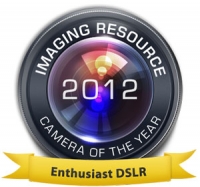
No one was voted into Major League Baseball's Hall of Fame this year, mainly due to the taint of performance enhancing drugs. But when it came to adding another model to the pantheon of legendary DSLRs, the Canon 5D Mark III -- introduced last spring -- earned IR's full support in just its first year of eligibility. And, yes, you can call the Canon 5D Mark III a mid-range DSLR on steroids, and we have no problem with that.
As one of the true superstar DSLRs launched in 2012, the Canon 5D Mark III deserved close scrutiny, and it's lived up to our high expectations. Replete with innovative features, the Canon 5D Mark III's most important ones are its full-frame sensor, whose resolution Canon kept to a conservative 22.3 megapixels, and its fast and accurate 61-point autofocus system that was brought over from the Canon 1D X. Canon definitely covered the right bases first, as the image quality -- both stills and video -- we saw in our lab and in the field were nothing short of spectacular, even at higher ISOs. There are issues, as with any system, including more limited dynamic range by comparison, and default settings for noise reduction and sharpening are a bit extreme in JPEGs, but most of that can be worked around or avoided by shooting raw. And while we wish the 5D Mark III included a pop-up flash, we found the camera's low-light performance to be stunning, making shooting in ambient light easier than ever.
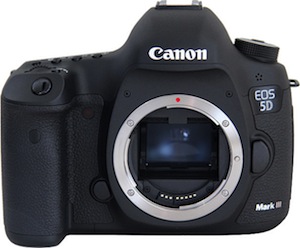
The Canon EOS 5D Mark III is such a capable camera that it's a fantastic purchase regardless of how you'll use it. It's easy enough for enthusiasts to capture stunning family portraits and travel photos, but sophisticated enough to satisfy the demands and needs of working pros.
Professional Wedding and Portrait Photographer Jeffrey Kuo in his IR pro review of the Canon 5D Mark III -- "I'm incredibly impressed with the improvements made over the 5D Mark II. With the new AF system on the 5D Mark III, I found myself trusting the camera to get a good focus much more often, allowing me to move on to the next shot, and spend more time observing my surroundings to get ready for the next beautiful moment."
Enthusiast DSLR Cameras of Distinction:
Nikon D800: Shooting with a digital camera like the Nikon D800 is a treat. All the controls are ideally suited for the experienced photographer: Important controls have a button or dial, and there are even a few buttons you can program to work just how you want. Built for the rigors of professional photography, the Nikon D800 is substantial, and its output is weighty as well, putting 36.3 megapixels on your subject for detail most folks have never seen. We don't think the Nikon D800 is a digital camera for everyone, but those who need it will surely love it.
Sony A99: The Sony A99 is a blazingly fast shooter, yet delivers 24 megapixels of resolution, while Sony's unique translucent-mirror technology means it can focus rapidly, continuously, and accurately, whether shooting videos or rapid-fire bursts of stills. It's also the only full-frame camera with very effective sensor-based image stabilization built in, providing IS benefits regardless of what lens is attached. The list of the Sony A99's features goes on and on, including a unique range-sensitive AF mode, a super-resolution EVF, built-in GPS, and a rugged magnesium-alloy frame with full weather sealing that's both smaller and lighter than most other high-end full-frame SLRs on the market.
Pro Camera of the Year: Canon 1D X
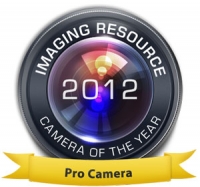
Pro cameras are defined by their performance, so it takes something really special to rise to the top of that particular group. The Canon 1D X has performance in spades: Speed, accuracy, consistency.
"This is without a doubt the most impressive camera I've seen since I went digital... The Canon 1D X is a certified monster of a camera. It's the biggest, the fastest, and if you'll permit me to create a word that is illegal in Scrabble, the bestest 35mm DSLR I've ever seen or used."
Professional photographer Scott Bourne flat-out raved about the full-frame, 18-megapixel Canon EOS 1D X in his review for IR last year, and based on our own experiences with the camera, we think it has no equal for shooting sports and fast action. Call it the cheetah of digital cameras. Powered by Canon's 61-point autofocus system and dedicated DIGIC processor, the Canon 1D X can continuously capture up to 14 frames per second, and its AF is more accurate than that of the Canon 5D Mark III -- no small feat.
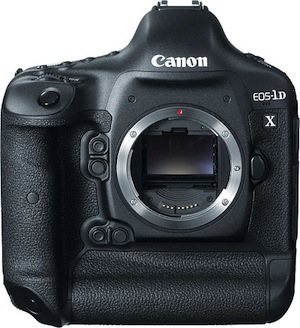
But it's not just about speed. The Canon 1D X's operation is buttery smooth and its results consistently excellent. Here's more expert testimony:
"The pro-level Canon user interface has evolved over the eight years I've been testing cameras, and it's still the most natural, easiest and fastest to work with. The Canon 1D X breezed through all my tests on the first pass, with extremely consistent results throughout a huge exposure range. It's a lovely and responsive tool, worth every penny."
So says IR's own senior lab tech and associate editor, Luke Smith. "It just works." Our exacting lab tests almost always require some level of tweaking and reshooting to get precisely the images we need; the fact that the 1D X needed virtually none of that made an indelible impression on us.
Need we say more about why we chose the Canon 1D X as the Pro Camera of the Year?
Pro Camera of Distinction:
Nikon D4: Nikon's professional workhorse digital SLR camera received more than just a single-digit upgrade to its model number in the D4 introduced last year. Though encased in a body of similar size and shape to its predecessors, the Nikon D4 now features a 16.2-megapixel full-frame CMOS sensor backed up by a new EXPEED 3 image processor. Largely eliminating the need for a flashlight in low-light situations, many of the Nikon D4's buttons are illuminated -- a great idea for a high-end camera whose key feature is excellent performance in low light. (As we've said before, this camera sees better in the dark than we do.) As expected, we were thoroughly impressed with the D4's imaging capabilities and its high-end set of pro features.
Pocket Camera of the Year: Sony RX100
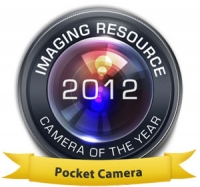
Bright lens. Small body. Large sensor. These three factors made the Sony Cyber-shot RX100 an early front runner for our favorite camera of the year over even high-end DSLRs and innovative CSCs. That's high praise for a pocket camera, a category that traditionally leaves us more resigned to limitations than excited by capabilities. But with the Sony RX100, someone finally delivered what so many photographers have long wanted: an everyday, take-with-you-everywhere premium pocket camera that produces stunning photos.
Since the RX100's 1-inch, 20.2-megapixel CMOS sensor measures about four times larger than the 1/2.3-inch sensors typical of most point-and-shoots, packing it into such a tiny camera body marked an engineering milestone. And pairing this larger sensor with a bright f/1.8 Carl Zeiss Vario-Sonnar T* lens -- among the very brightest in the pocket category -- produced images that exceeded almost all its pocket-sized rivals. While we found some lens flare, corner softening and muted colors in the Sony RX100's photos, these are minor quibbles when compared against the results of most point-and-shoots -- and even some compact system cameras. Add the fact that you can shoot RAW and fix most issues in post and it's almost not worth mentioning.
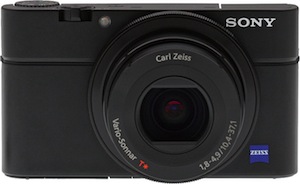
The Sony RX100 also scored high with us in performance, clocking in with SLR-class autofocus speeds and blazing buffer clearing, as well as integrating a range of smart controls, easy-to-use (Sony Alpha-based) interface and a superb LCD monitor. Overall, the Sony RX100 shook up the pocket camera market and made a huge impression with IR editors and readers alike. Unlike many new cameras, it actually lived up to most of the hype, while packing an astonishing amount of imaging power into a small body.
Pocket Cameras of Distinction:
Panasonic LX-7: Panasonic's deluxe pocket digital camera line has long been a favorite of photographers as a small, capable, take-everywhere camera, when lugging their pro camera was too much to ask. Improved in several ways, the Panasonic LX7 digital camera is a joy to shoot. Key refinements include a manual aperture ring, a manual focus toggle, and a faster, high quality lens. As we've come to expect from Lumix digital cameras, the LX7 also has rock-solid image stabilization, and the new level gauge helps keep your horizons straight. Optical quality stands out as the major enhancement, which gave us the confidence to place key compositional elements in the corners without worrying that they'd be too soft. The new faster lens -- a full stop faster -- allows faster shutter speeds in low light, and delivers nice bokeh as well.
Olympus XZ-2: Overall, the Olympus XZ-2 being a little bigger than its high-performing predecessor didn't bother us much (besides, we found that it's easier to grip). Its tilting LCD and touchscreen make it more versatile than the XZ-1. Of course, what we really want from a premium compact camera like this is good image quality, and the Olympus XZ-2 doesn't disappoint for its category, surpassing most with its upgraded 12-megapixel, 1/1.7 inch backlit CMOS sensor and a big, bright f/1.8 4x optical zoom lens.
Entry-Level Interchangeable Lens Camera of the Year: Nikon D3200
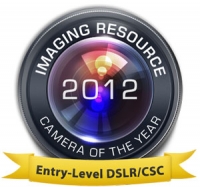
Several great DSLRs and compact system cameras launched last year were aimed squarely at novice photographers wanting to step up from their smartphones and digicams, which made choosing a winner in this category extremely difficult. Ultimately, the IR staff came to a consensus on the Nikon D3200, arguably the best DSLR Nikon has ever made for beginners. Considering the many excellent entry-level DSLRs Nikon has created over the years -- the D40 immediately springs to mind as one of our personal favorites -- that's saying a lot.
The Nikon D3200 not only boasts a more compact, comfortable and ergonomic design than its predecessor -- the D3100 -- but also boosts the pixel count of its APS-C CMOS sensor to 24.2 megapixels, putting it miles ahead in terms of resolution. In our lab and field tests, we found that the D3200 produced great photos, even in low light. Though we feared that the jump in pixels might increase noise at high ISOs, we were pleased to discover that the increase didn't dramatically affect maximum print sizes, allowing you to get a decent 5 x 7-inch print at up to ISO 12,800. At lower ISOs, the extra resolution also gives you a ton of flexibility to make tight crops.
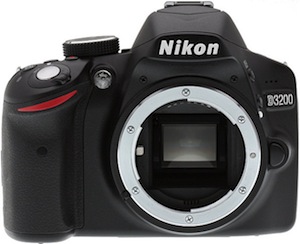
Perhaps even more important for entry-level photographers, the Nikon D3200 just begs to be picked up for shooting. We loved its fast, responsive controls and operation, which included a whisper-quiet shutter perfect for capturing candids. In the end, the D3200 is a near-perfect (save for the mediocre kit lens usually found on entry-level models) step-up camera for those just starting to get serious about photography, and it provides enough image quality, features and control to let beginners express their creativity without getting overwhelmed.
Entry-Level Interchangeable Lens Cameras of Distinction:
Panasonic G5: The Panasonic Lumix G5 takes the highlights from their well-regarded G-series of Micro Four Thirds digital cameras and rolls them all into one package. The Lumix G5 feels better thought out than many entry-level DSLRs, including a touchscreen LCD monitor and speedy autofocus, at roughly the same price. Boasting better ergonomics and handling than the previous-model G3, the Panasonic G5 also boosts its video performance by adding Full HD recording at 60p, and a full-range of frame rates that make it perfect for serious photographers and videographers alike.
Sony NEX-F3: The Sony NEX-F3 aims to serve family and entry-level photographers with an updated, tilting LCD panel that can now be seen from in front of the camera, putting you back into the family album. And that's not the only worthwhile update over Sony's previous entry-level mirrorless model. There's also a built-in popup flash that saves you from carrying an external strobe, and a restyled body with a much more prominent handgrip. As you'd expect of a NEX-series camera, the Sony F3 offers great image quality, despite a pricetag even the family photographer can justify.
Technology of the Year: Fujifilm's X-Trans Sensor
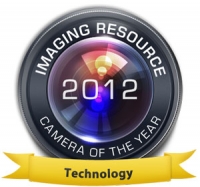
Fujifilm has been at the forefront of sensor innovation for years now, although some of their previous efforts saw only limited success. In 2012, though, they released their X-Pro1 camera, using their new X-Trans sensor technology, introducing an entirely different color filter architecture that's truly a revolution in sensor technology. Fujifilm's X-Trans technology replaces the near-universal 2x2 pixel Bayer-pattern color filter array (CFA) with a much larger 6x6 cell having a quasi-random arrangement of the red, blue, and green pixels. Because the X-Trans pattern includes red and blue pixels in every horizontal line of the array -- whereas Bayer-filtered cameras display these two colors only in alternating rows -- it can produce more consistently accurate colors and color boundaries. The net result is a real step forward in image resolution and crispness, as well as a more "filmic" look to its image noise pattern.
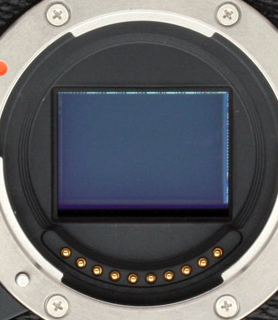
There seems to be a developing trend in the camera industry of late, with manufacturers dramatically weakening or even entirely removing low-pass filters, in an effort to increase perceived sharpness. This does in fact yield crisper, more well-defined detail, but does so at the considerable cost of increased susceptibility to color moiré patterns and other aliasing artifacts. With X-Trans, Fujfilm took an entirely different approach. They eliminated the low-pass filter, but the unique CFA pattern and the tricky math they developed for reconstructing full-color images from it effectively created a "virtual" low-pass filter at the hardware and firmware level. Mathematically, there's no getting around the Nyquist limit, but Fujifilm's unique CFA structure and the clever math they developed to interpret it apparently have managed to shift the unavoidable artifacts into forms that aren't obvious to the human eye.
As noted, Fujifilm has been pushing the envelope of sensor design for years now, with varying degrees of success. With their X-Trans technology, though, they appear to have finally delivered something truly special. In testing the X-Pro1, we found exceptionally sharp images, with clean detail and very few artifacts -- and the X-Pro1's image sharpness was realistic, not oversharpened and rife with halos like we often see in JPEGs from even top DSLRs.
Late in the year, Fujifilm launched the X-E1 with the same X-Trans sensor, and we've been equally impressed with the first shots from this smaller, less expensive sibling to the X-Pro1. The manufacturer hasn't rested on its laurels, either. At CES in January, Fujifilm introduced the X-Trans II sensor technology that's at the heart of two new cameras, the X100S and smaller-sensor X20. We can't wait to test these cameras and see how the continued evolution of Fujifilm's revolutionary camera technology is playing out.
Everyone talks about the importance of out-of-the-box thinking, but few are willing to endure the struggle that's needed to bring something truly radical to market. Fujifilm stuck it out, and we're happy to see them finally enjoying the fruits of their long years of effort and innovation in sensor technology.
